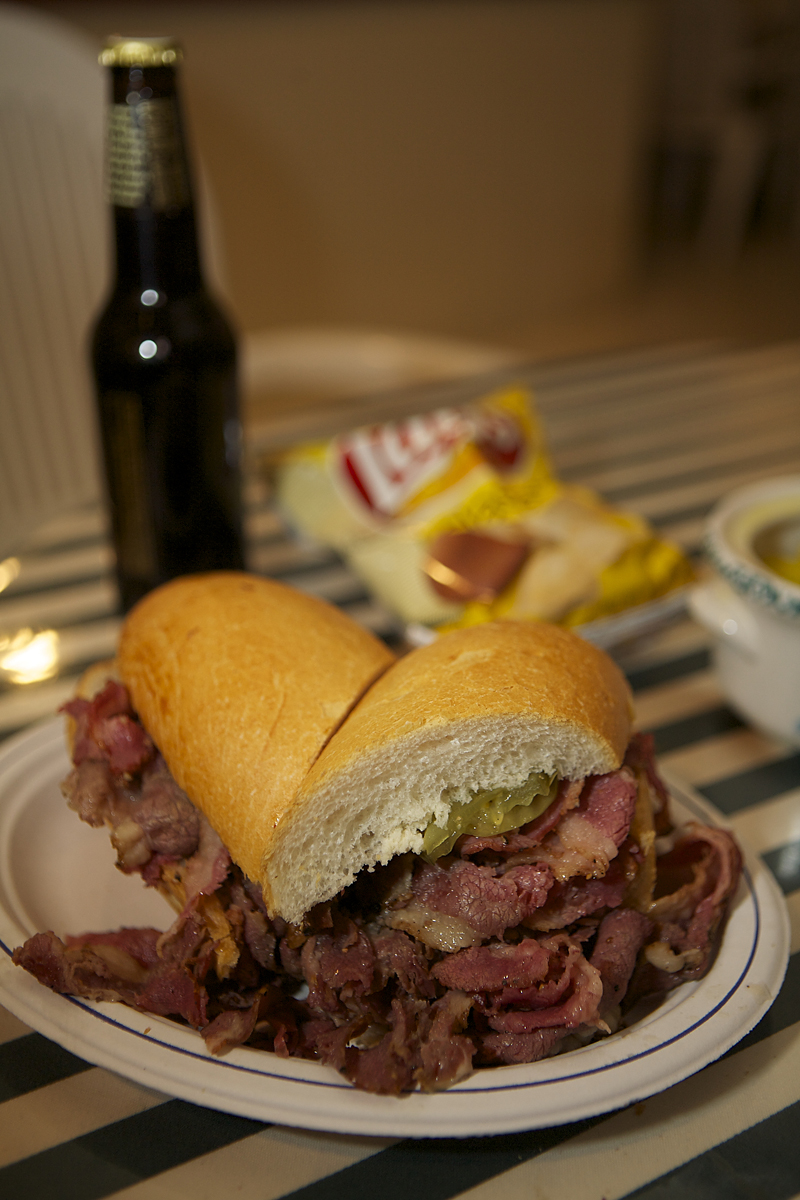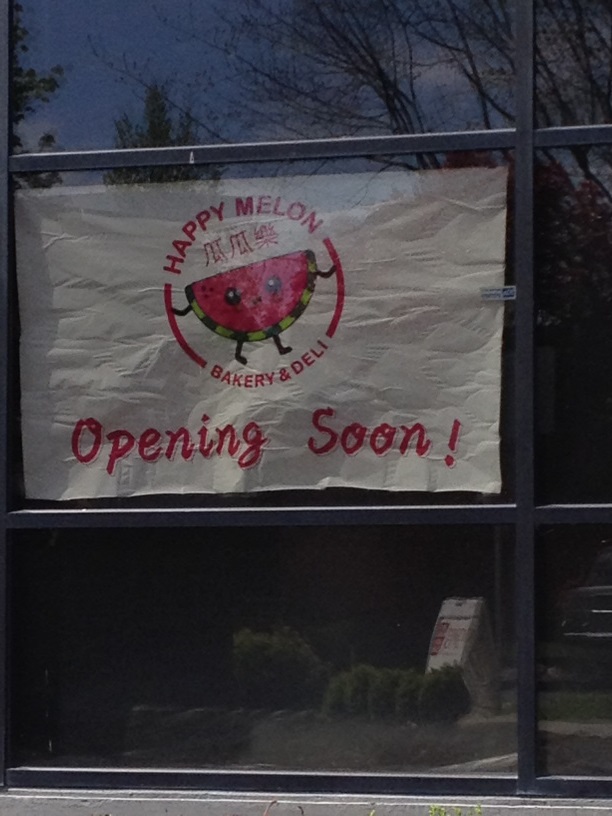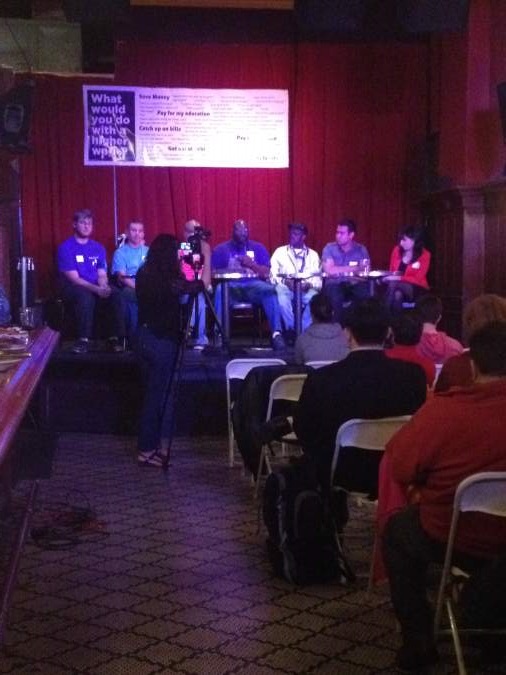Anyone with decent online research skills and a finely tuned GPS unit can track down the area’s most spectacular pastrami sandwich. Locating its creator is a considerably harder task.
Phones are especially smart at remembering phone numbers, so it’s been a decade or two since I’ve had a string of digits ingrained in my brain. But the small store of numbers I can dial instinctively now includes the number for Barney’s Pastrami Dip, the dog-eared Everett sandwich shop that I pelted with unanswered calls for a week or two after being wowed by it.
I tried leaving enthusiastic messages. I tried leaving serious messages. I became so eager to learn about David Barney’s pastrami methods that I even tried interviewing him in a dream, which may also have included dancing pickles.
The real Barney finally picked up one day around noon, when he undoubtedly figured the caller wanted to place a to-go order. We arranged to talk later in the week, but when I placed my call at the appointed hour, I ended up talking to the restaurant’s generic voice-mail system again. Barney was hugely apologetic when I reached him that afternoon: “I didn’t have your number,” he offered, rescheduling our phone chat for the following week. He didn’t answer then either, so I once more cornered him during lunch rush. “I missed your call this morning by two and a half seconds,” he said brightly. “I’m busy now.”
Barney firmly refused my requests to visit him at the restaurant, suggesting I try his cell phone at 7 p.m. on a Tuesday. “This won’t take long,” I assured my dining companion when I ducked into a bathroom to make the call. I was back at the table in less than a minute. This time Barney returned my call. “Right now I’m in a meeting,” he explained. Perhaps we might talk another day. Of course, we never did.
Although I probably should have been frustrated by Barney’s dodginess, it was halfway refreshing to encounter a food professional who isn’t enthralled by his or her own yarn. “Farm to table” is the most basic narrative ruling the contemporary eating scene, but savvy chefs and artisans have embellished the story line with heirloom pigs, craft slaughterhouses, and recipes culled from musty antebellum mercantile ledgers. Even food producers who have the wherewithal to scorn manicured mustaches and butchery tattoos know they have to sell a story, best told loudly and repeatedly in a distinctive voice. But Barney, judging from his humble shop and on-phone demeanor, isn’t a pseudo-politician, bard, or stand-up comic. He’s just a guy who sells pastrami. And the pastrami is extraordinary.
In this country, pastrami is Jewish barbecue: It’s beef that’s been brined, seasoned, and smoked. But as David Sax points out in his book Save the Deli, the closest thing the sandwich meat has to a definitive biography, there’s goose pastrami in Romania and camel pastrami in Morocco. Ashkenazi immigrants who settled in New York City gravitated toward beef because cattle were plentiful on the Western plains, and their kosher cuts were relatively affordable.
The cut most frequently given the pastrami treatment was the navel, which is found just about where you’d expect to find it. This belly meat is essentially cow bacon, and it’s no longer as cheap as it was when every Schmulka, Abe, and Izzy was in the deli business. Pastrami purveyors devoted to the bottom line now substitute leaner cuts, which would have a better showing as roast beef, and artificially plump scrawny navels with water, salt, and chemicals.
But a few pastrami makers have managed to survive by stressing traditional flavors—and skirting the tremendous costs associated with glatt kosher certification, the gold standard for Jews who observe dietary laws. These purveyors, who still individually rub navels with coriander, burnt sugar, and mustard seed, are concentrated in big cities with strong beef histories. To wit, in 2009 Barney told the Everett Herald that his pastrami is cured and smoked in metro Chicago.
There isn’t only one great pastrami supplier in Chicago, however, although Chicago Tribune food reporter (and Seattle native) Kevin Pang speculated that Barney might be buying his meat from City Foods, which provides the pastrami for Manny’s, a South Side institution where Barack Obama always gets the corned beef and the potato pancake. Theodore Ordon, a San Franciscan who blogs as the Pastrami King (pastramiblog.blogspot.com), sized up Barney’s sandwiches online and suggested the meat might come from Vienna Beef, a 119-year-old outfit better known for its hot dogs. Although Vienna now sells primarily to supermarkets and Sysco, it still produces hand-trimmed, hand-rubbed pastrami for old-time delis. While Barney’s is a whippersnapper compared to Manny’s or Vienna, it fits the bill.
Seated in the back corner of a squat strip mall that’s a more likely venue for a coin-and-stamp shop, Barney’s only outward marking is a curved awning with the restaurant’s name written in 1980s script. But Barney’s name is everywhere inside the counter-service storefront: Dozens of 8″ x 10″ glossies have been stamped with labels identifying the pictured stars as members of the Barney family, including Olivia Newton-Barney, Gen. George S. Barney, Marilyn Barney, and Humphrey Barney. Everything else in the room is strictly utilitarian: a wall-mounted bulletin board, thick with business cards pinned up by Shriners, realtors, and pawnbrokers; a fading color television; and round plastic picnic tables surrounded by mismatched plastic chairs.
Barney’s stocks hot dogs, tamales, and chili, but the folks who order them are probably the same eaters who ask for chicken nuggets at Chinese restaurants. The line—usually long, always slow—is for the pastrami. “Hey, do you like pastrami?” a waiting customer said into his cell phone. “It’s a kind of meat. Well, I’ll get you a pound, and if you don’t like it, I’ll eat it.”
Inexplicably, Barney offers every fathomable hot sauce for his sandwiches, and the tables are set with jars of pickled peppers. No matter how much you like spice, resist the urge to reach for it; even cheese is extraneous here. The only necessary condiment is Barney’s spicy mustard, which he liberally slathers on every chewy, crackly-crusted hoagie roll.
The thinly sliced pastrami at Barney’s is grapefruit-pink and mostly lean. Yet its flavor doesn’t suffer from the lack of visible fat: The phenomenally juicy meat is rife with black pepper, smoke, and brine, but tastes predominantly of good, rich beef. Steamed soft and spiced with garlic, the pastrami’s piled on in portions that appear manageable on first bite, but nearly always prove defeating.
You’ll likely go home with half a sandwich, which is just how Barney wants it. While you might leave lesser delis having had your ear bent about beef selection and curing methods, here you get pastrami. Yet Barney’s is a story you’re bound to keep telling, even if the proprietor won’t.
PRICE GUIDEPastrami sandwich $8.95 Pepsi $1.39 Coffee $.85 Lay’s chips $.85








